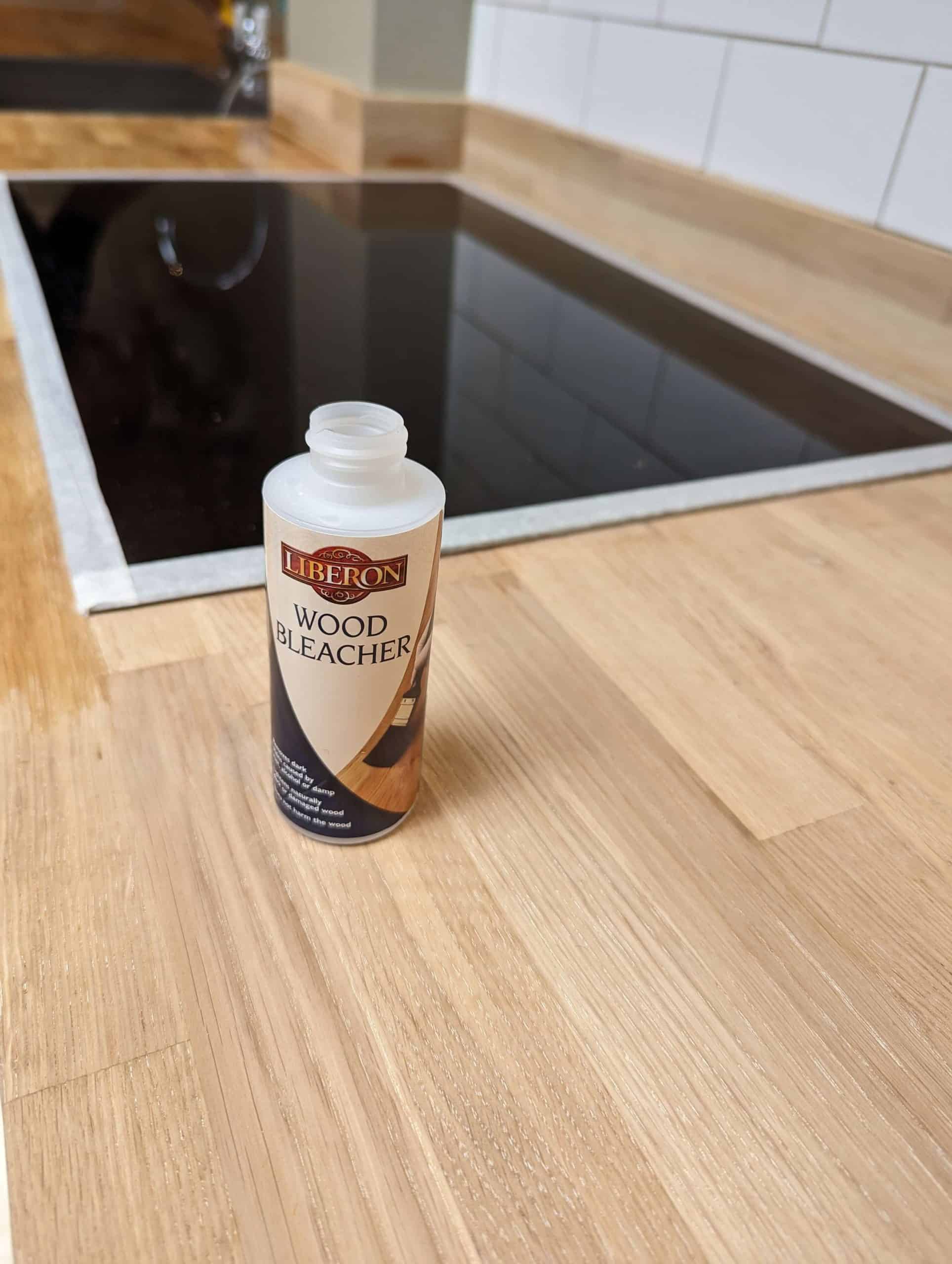Description: Revive kitchen wood worktops
Location: South London
Material: wood

Restoring wooden kitchen worktops is an excellent method for restoring their natural attractiveness and extending their durability. Typically, the procedure entails sanding the surface, repairing any holes or damage, bleaching the timber to lighten its colour, and then applying an oil product for protection and a polished finish. Nonetheless, there are a number of ramifications and approaches to consider before beginning this restoration endeavour.
Sanding Down: The first stage in the restoration process is to sand down the worktop. It aids in removing any existing finish, blemishes, or flaws from the wood surface. Using progressively finer grits of sandpaper, sanding should be performed with care to obtain a smooth and uniform finish. Note, however, that excessive sanding can remove too much wood, potentially compromising the worktop’s structural integrity.
Before bleaching and treating the wood, it is essential to restore any holes, cracks, or damage that may be present on the worktop. Depending on the size and extent of the injury, this can be accomplished using wood filler or epoxy resin. After the repair material has cured and hardened, the surface can be sanded once more to ensure a uniform finish.
Bleaching the wood is an optional phase used primarily to lighten the worktop’s colour. Bleaching can reduce or eradicate discolorations and stains on wood, giving it a clean appearance. It is essential to adhere to the instructions included with the wood bleaching product and to ensure adequate ventilation throughout the procedure. After bleaching, the countertop must be thoroughly rinsed and allowed to dry before moving on to the next phase.
Treatment with Oil Product: Treatment with an oil product is essential for protecting the restored worktop from moisture, discoloration, and general wear and tear. The form of oil utilised can vary according to individual preference and desired results. Mineral oil, tung oil, linseed oil, and Danish oil are frequently employed for kitchen surfaces. Applying the oil product uniformly with a clean cloth or brush and allowing it to penetrate the wood’s surface nourishes the wood and enhances its natural beauty (in this project, we use the same oil that has been routinely applied at Balmoral).
Implications:
Restoration of wooden surfaces can be a time-consuming and labor-intensive endeavour. Sanding, repairing, bleaching, and oiling necessitate patient and meticulousness. It is crucial to allocate sufficient time and effort to properly complete each phase.
Despite the fact that restoring worktops is within the purview of the dedicated DIY devotee, certain aspects require skill and knowledge. Important factors to consider include proper sanding techniques, selecting the appropriate restoration materials, and understanding the characteristics of various wood species.
Safety Precautions When sanding, sterilising, and utilising oil-based products, it is essential to observe safety precautions. It is recommended to wear mittens, goggles, and a mask to prevent skin irritation, eye damage, and inhalation of hazardous fumes.
Regular Maintenance: After restoring the countertop, it is necessary to maintain its appearance and durability by regularly cleaning and reapplying the oil treatment as necessary. This assists in protecting the wood against moisture, stains, and other damage.
In conclusion, wooden kitchen worktops can be restored by sanding the surface, repairing any defects, bleaching the wood if desired, and treating it with an appropriate oil product. Although this process requires time, effort, and a certain level of skill, the final result can be a worktop that adds warmth and personality to the kitchen. Regular maintenance and care are required to guarantee the restored worktop’s durability.

